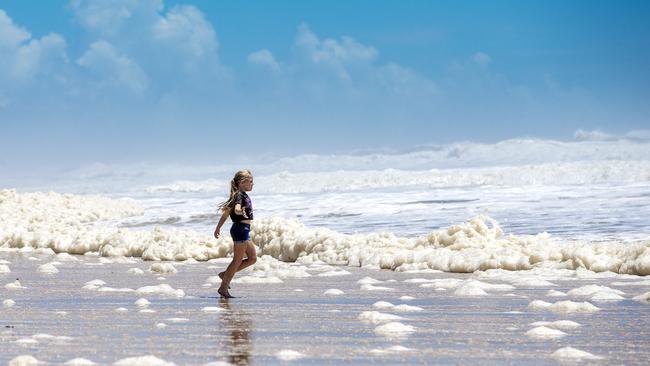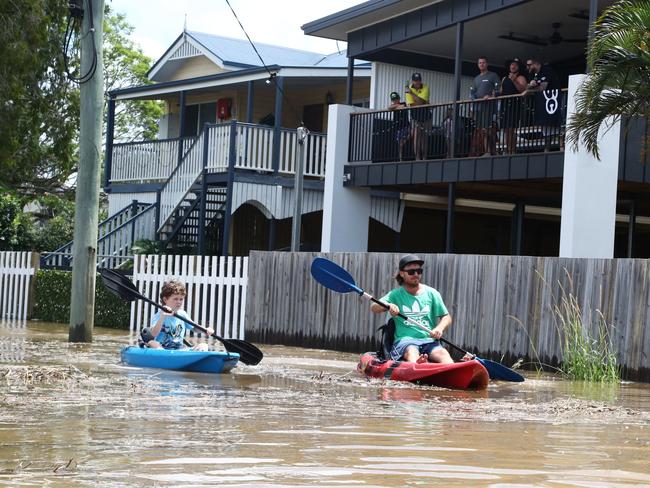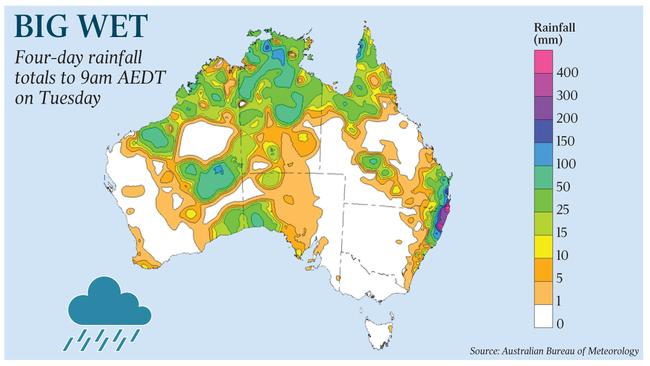Storm savaging fails to dampen tourists’ enthusiasm
Tourism operators on the Gold Coast and northern NSW are hoping the worst of storm weather is over after a four-day soaking.

Tourism operators on the Gold Coast and in northern NSW are hoping the worst of storm weather is over after a four-day soaking forced visitors indoors and closed iconic beaches.
The opening of Queensland’s borders at the start of December was meant to be the catalyst for a much-needed bounce-back for local tourism operators after the turmoil of the pandemic, but the dumping of almost 1m of rain in some areas that caused rough surf conditions could be a deal breaker for some.
Holiday-makers are yet to respond to the storm system’s damage, with hoteliers and operators on the Gold Coast and further south at Byron Bay reporting no mass cancellations. Gold Coast beaches have suffered minimal damage while the erosion in Byron Bay has been largely confined to Main Beach. Gold Coast mayor Tom Tate said bookings remained strong, with local tourism officials expecting that to continue well into January.

“Australians are a resilient bunch and we all understand that unpredictable weather is a common event over the summer,” he said. “I have no concerns that tourists will stay away based on possible weather events.
“There is incredible pent-up demand for Australians to holiday, given the horror year we have all had.”
Queensland Tourism Industry Council chief executive Daniel Geschwind said the re-emergence of sunshine over the Coast on Tuesday was a welcome relief for operators.
“We’ve been battered this year, the tourism industry, by both COVID-19 and bushfires,” he said. “The weather’s another problem to overcome. It is not the ideal lead into Christmas but we need (rain) and are trying to look at the positives.”
As the storm system that battered the region weakened and moved south and inland, some areas faced a substantial clean-up.
The Queensland State Emergency Service said calls for assistance had slowed by late Tuesday, with outstanding jobs down to 315 from 1400-plus since Saturday.

Beaches were closed from the Gold Coast to Byron on Tuesday afternoon, with the Bureau of Meteorology maintaining a severe surf and wind warning throughout the affected region.
At Bribie Island, the northernmost tip was inundated with water.
While the significant swell and above average tides have contributed to “over topping”, the Sunshine Coast Council does not believe erosion will cause the waves to break through the land.
Pumicestone Passage is now closed to visitors as authorities monitor erosion on the island
In the Gold Coast Hinterland, huge boulders tumbled on to Tamborine Mountain Road, at Mount Tamborine. It sustained significant damage and was expected to remain closed for some time, with Queensland police telling people to avoid the area.
Upper Springbrook, at the southern end of the hinterland, received almost a metre of rain in the past week.
The BOM expects cold and isolated coastal showers to impact the region over the coming days.








To join the conversation, please log in. Don't have an account? Register
Join the conversation, you are commenting as Logout